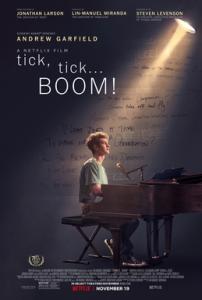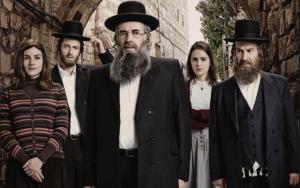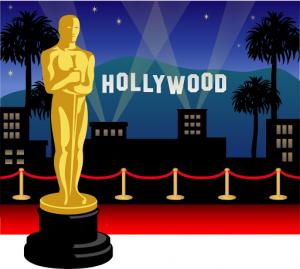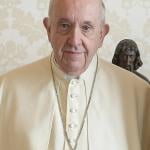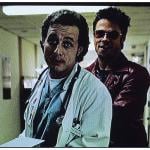When director Ron Howard’s new film Angels & Demons marches into theaters on May 15 some people may be expecting the same controversy that accompanied his 2006 film The Da Vinci Code. Alas, I am sorry to be a killjoy but audiences just may be inspired instead. I know I was.
The Story
Some time has passed since Dr. Robert Langdon (Tom Hanks), a Harvard University “symbologist” attempted to solve a mystery that seemed to indicate that Leonardo Da Vinci had hidden in his Last Supper masterpiece not only that Jesus had fathered a daughter with Mary Magdalene, but that she was divine. Langdon, who was not a believer, incurred the ingratitude of the Catholic Church for his efforts. This completely fictitious controversial story was told in best-selling author Dan Brown’s 2003 book The Da Vinci Code and Ron Howard’s 2006 film of the same title.
Now in Angels & Demons (based on Dan Brown’s 2000 novel that actually preceded The Da Vinci Code) Langdon is back at Harvard, working out in the pool early one morning when a Vatican official approaches him with a paper. One word is printed on it in gothic type: Illuminati. The official explains that the Vatican has received threats from this secret society, thought to be long extinct. Indeed, the pope has died and four of the cardinals most favored to be elected the next pope, the “preferiti” or “papabile”, have been kidnapped. The official wants Langdon to accompany him to the Vatican to help interpret the symbols and clues left by the Illuminati. The conclave is about to begin. Langdon is surprised, given his strained relationship with the Church, but agrees.
Meanwhile, another Illuminati threat appears. A canister with a particle of extremely volatile “anti-matter” has been stolen. The priest-scientist who discovered the process that has the potential to recreate the moment of creation, become a weapon of mass destruction, or become an inexpensive source of energy, was murdered. The canister is somewhere in the Vatican and timed to explode when the last of the four cardinals is killed.
Langdon is joined by a beautiful scientist who understands the mechanisms of the canister, Vittoria Vetra (Ayelet Zurer, Munich), and a host of Vatican and Roman police and Papal Guards, in a race is to save the cardinals and the Vatican before midnight. Complicating matters are the deceased pope’s camerlengo, the angelic Father Patrick McKenna (Ewan McGregor, Moulin Rouge), and the aging, traditional, and ambitious Cardinal Strauss (Armin Mueller-Stahl; Shine)in a rather devil’s advocate role. Not all is as it seems, and not everyone is who he appears to be.
Critique
Angels & Demons is a very different film from The Da Vinci Code. It takes place in the Vatican and Rome with a side trip to Switzerland. The movie was filmed on a set that was constructed not far from Sony Studios in Culver City, CA where I live. The Vatican and the City of Rome refused most requests to film there apparently because of the fall-out from The Da Vinci Code and the cautions circulating about this film. The Catholic Church of Angels & Demons is very male. No mention is made of the “divine feminine” and other points that caused so much doctrinal distress in The Da Vinci Code. In fact, God is hardly mentioned in Angels & Demons. The film is very violent, however, despite the PG-13 rating.
The pageantry in the film contrasts with the good guys chasing those who seem to be many bad guys – and therein lies the plot. Things are not what they seem.
One of the major plot points in the film is the relationship between the Catholic Church and science. According to the film, the Illuminati began as a secret society that resisted the Church’s persecution of scientists beginning with Galileo (1564-1642) and now they are emerging again because of scientific developments that interest the Church. (In actuality, a group calling itself Illuminati were formed in Germany in the 1700’s and lasted for about ten years.)
Controversy
Dan Brown’s books as well as the films based on them are fiction. I was in second or third grade when I learned the difference between fiction and non-fiction and admittedly much older when I started asking questions about books, film and television.
There are inaccuracies in Angels & Demons about history and Catholic practice such as who can be elected Pope and how. For example, “acclamation” was one of the valid forms of papal election before 1996, but in the film they call it “election by adoration” which really irritated by Catholic ears.
Despite these annoying elements, I did not find anything controversial in the film, nor did I find the film Angels & Demons anti-Catholic. It is more about action than theology, unlike The Da Vinci Code that attempted to dismantle Christianity. I interpret the worldview of Angels & Demons as commercialism struggling to become art.
Ted Baehr of Movieguide, a Christian organization that reviews films, without having seen the film, had this to say in a fundraising letter on April 29, 2009 about Angels & Demons:
“A clear anti-Christian message that not only are Christians evil and murderers but also that science has proven faith in Jesus Christ to be outdated! In the end, it is the highest echelon of the Catholic Church who is the villain!”
However, the official Vatican newspaper review on May 5, 2009 of Angels & Demons states that the film is “Two hours of harmless entertainment, which hardly affects the genius and mystery of Christianity.”
As hard as some people have tried, Angels & Demons is not controversial. It is a Hollywood movie made with great skill. As the Vatican also noted, the filmmakers masterfully recreated the Vatican and various pieces of art for the film. The film is engaging and entertaining, contains scenes of peril and intense violence, and is about twenty minutes too long.
Should you decide to see it, Angels & Demons is an intense thriller with a surprising, satisfying, moving, and even inspiring, finale.





